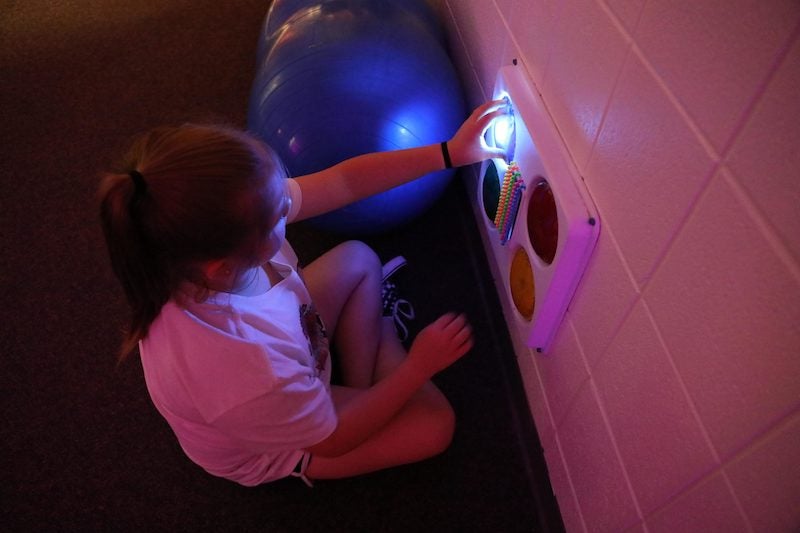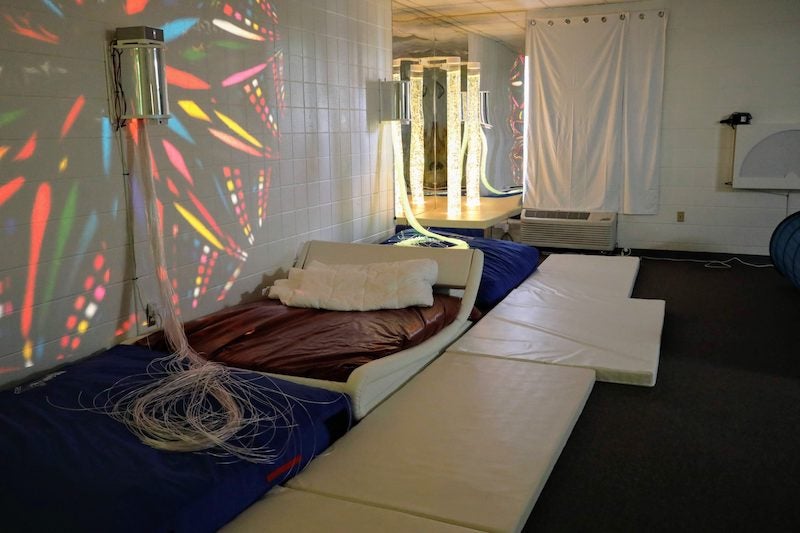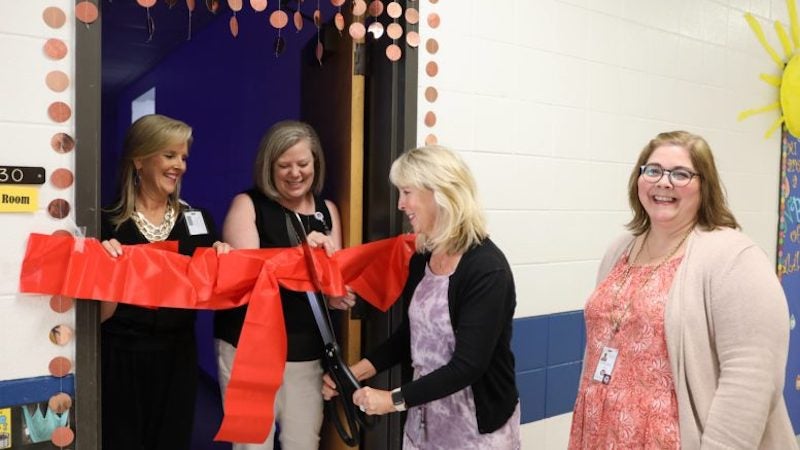OMES holds ribbon cutting for new multisensory room
Published 9:56 am Tuesday, May 4, 2021
|
Getting your Trinity Audio player ready...
|
By CINDY WARNER / Special to the Reporter
The number of students who have experienced trauma or have a sensory processing disorder continues to grow each year. But, thanks to approximately $60,000-$70,000 in new equipment, students at Oak Mountain Elementary School (OMES) now have a new state-of-the-art multisensory room to reset their bodies and minds.
“The opportunity to have a place to calm their bodies and become regulated can make a difference in a successful day or a traumatic day at school for these students which is why we needed an updated multisensory room,” said Lisa Moore, who serves as an Occupational Therapist with Shelby County Schools Special Education and was instrumental in writing the grant that led to the donation of the equipment.
Moore partnered with OMES music teacher Heather Atkins to apply for a grant to the Christopher Douglas Hidden Angel Foundation. The foundation, named in honor of Christopher Douglas Fornes, helps to enrich the lives, health and social well-being of people with cognitive, emotional and physical challenges through the use of multisensory environments.
Normally, organizations applying for grants to the foundation would need to provide matching funds. However, this year the foundation had additional equipment they needed to donate and OMES ended up being the recipient of their generosity, said Moore.
Multisensory environments are spaces designed to combine a range of stimuli to help students develop and engage their senses. Moore explained that the brain is designed to regulate and produce responses to the body’s sensory experiences, including the ability to see, smell, touch, taste and hear.
“For most people, these senses remaining regulated is a normal and typical part of the day. Some students, however, have difficulty regulating their senses, causing them to become overwhelmed with the way their brain is processing experiences in their classroom and the world around them,” Moore explained. “When this happens, it can be a major source of distress for the student and may result in tantrums or aggressive behaviors.”
Having a sensory room for these students can open up a new world for them, Moore explained. Students with sensory processing issues, those who have experienced trauma, or a typical child who is having a hard day can benefit from a safe place to become regulated and ready to learn.
“Sensory rooms help students calm and focus themselves to be better prepared for learning and interacting with others,” said Moore.
OMES had a physical space for a multisensory room, but the equipment was outdated and needed to be updated.
“We wanted to work as a multidisciplinary team — therapists, teachers and administrators — to repurpose this space into something that we could be proud to share with our students and our stakeholders,” Moore said.
Atkins’ youngest daughter has arthrogryposis multiplex congenita which causes muscle weakness in her extremities. She attended the Bell Center until she was 3 years old and while there Atkins was able to explore their new sensory room.
“It was amazing! As we were trying out all of the equipment, I was thinking of all of the students here at OMES that would reap the benefits of a room like this,” Atkins said. “I am so thankful to have been a part of the process. I love hearing stories about the benefits we are already seeing from this room with our students.”
“My undergrad degree is in Music Therapy, so I am also excited to use the room during some of our music classes that are geared to our special learners,” Atkins added.
The new multi-sensory room has new lighting, bubble tubes, a projector, and a sound machine to create a calming environment. It also has a sensory water mattress, floor mats and other equipment to help students work on improving both cognitive and physical skills.
“The overall goal is to provide all that we need within the walls of our school to best serve our students. We want them to feel safe and successful while they are here,” explained Moore. “We expect that this room will allow our students to improve their self-regulation, resulting in a decrease in aggressive behaviors. If our students can manage their stress and regulate themselves, we will see an increase in time spent in the classroom, in their academic achievement, and in building relationships with others.”












